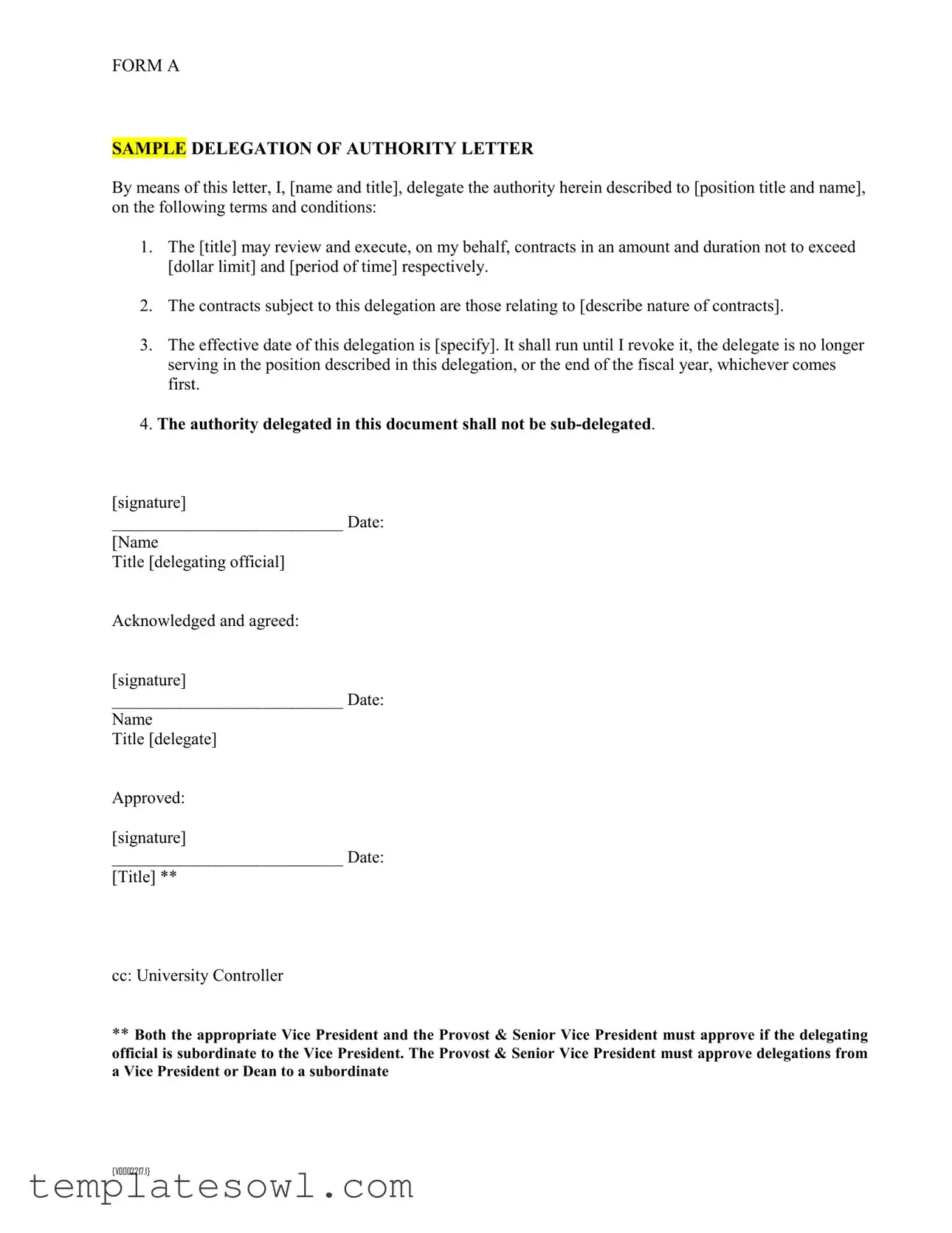What is a Delegation Letter?
A Delegation Letter is a formal document that allows one person to grant authority to another to act on their behalf in specific matters. It outlines the terms and limitations of that authority.
Who can create a Delegation Letter?
Any individual in a position of authority can create a Delegation Letter. Typically, this includes supervisors, managers, or department heads who need to designate someone to handle certain tasks or decisions in their absence.
What information is needed to complete the Delegation Letter Sample form?
To complete the form, provide your name and title as the delegating official, the name and title of the person receiving the authority, the dollar limit for contracts, the duration of the delegation, and a description of the types of contracts involved. Additionally, you will need to specify the effective date of the delegation.
Can the authority delegated in the letter be passed on to someone else?
No, the authority delegated in this document cannot be sub-delegated. The person to whom the authority is delegated must act independently and cannot pass the responsibilities to another individual.
How long does the delegation of authority last?
The delegation lasts until it is revoked, the delegate no longer occupies their position, or until the end of the fiscal year, depending on what occurs first. It is important to keep track of these timelines to ensure proper oversight.
What approvals are necessary for the Delegation Letter to be valid?
For the Delegation Letter to be effective, it may require approval from the appropriate Vice President and the Provost & Senior Vice President, especially if the delegating official is a subordinate to a Vice President. For delegations from a Vice President or Dean to a subordinate, approval from the Provost & Senior Vice President is essential.
Is there a specific format to follow when drafting a Delegation Letter?
Yes, the Delegation Letter should follow a clear structure that includes an introduction, the terms of the delegation, the effective date, and space for signatures from both the delegating official and the delegate. This format helps ensure all parties understand the delegation's scope and limitations.
